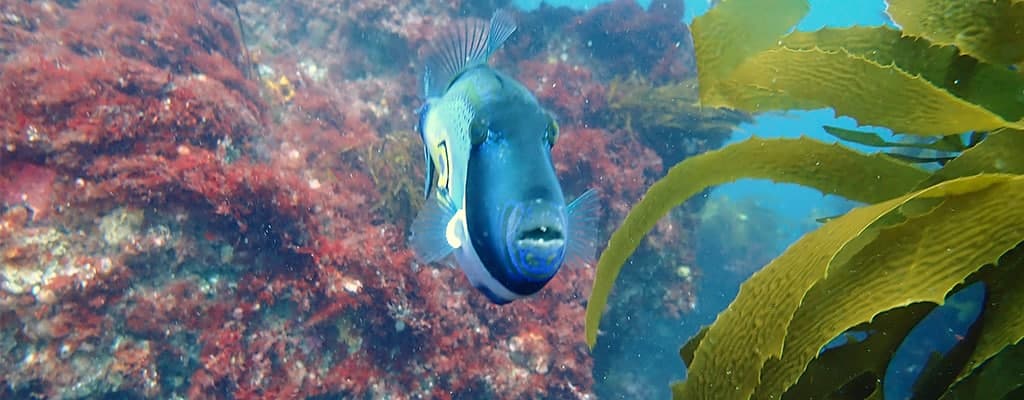Victoria’s subtidal reefs are either extensions of intertidal rocky reefs, or isolated offshore reefs. Taking the form of banks of stones or cobbles, large underwater boulders, cascading shelves of rock, or canyons, caves and arches carved out of the seafloor, they are scattered throughout Victorian waters from low-water mark to a depth of 100 metres. Granite reefs occur in Wilsons Promontory Marine National Park, and sandstone reefs in Point Addis Marine National Park
The rocky reefs of southern Australia support a highly endemic marine flora and fauna. Over 1400 species of algae have been recorded from southern Australia, and 70% are endemic (found nowhere else in the world). The species we find on our reefs evolved from ancient Gondwanan species and more recent Indo-Pacific species that have invaded Australia as it has drifted slowly northwards. Australian Fur Seals (Arctocephalus pusillus doriferus) and Southern Rock Lobsters (Jasus edwardsii) are found on rocky reefs, which also support sponges, sea anemones, lace corals, tube worms and sea squirts, and are a home for abalone, crayfish, sea urchins, wrasse, perch and leatherjackets.

